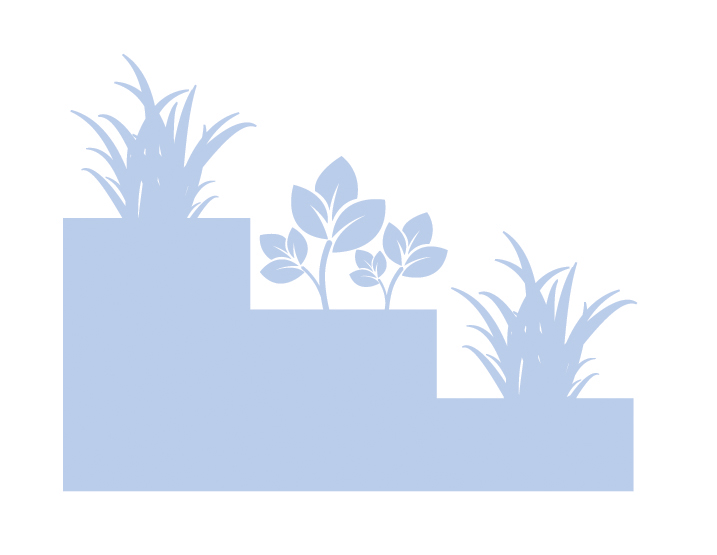Water Quality, Soil Health Solutions at Work: Terraces

Terraces: An earthen embankment, ridge or ridge-and-channel built across a slope to slow water runoff, therefore reducing soil erosion and phosphorus loss.
Terraces control runoff in different ways depending on the design. They may direct water to a grassed waterway, underground into a tile drainage system, or allow water to infiltrate (e.g., the level terraces used in the deep loess soils of western Iowa). Fields with long and uniform slopes are best for terraces. Multiple terraces are often built parallel to each other to more effectively collect and move water.
Types of Terraces
There are different kind of terraces that can be used depending on the need and the type of land. The two basic types are storage and gradient terraces. A storage terrace captures runoff, removing phosphorus and other nutrients. The stored water either makes it way deep into the soil or is removed through an underground pipe. Gradient terraces are designed as a channel to allow water to flow to a stable outlet such as a grassed waterway. Other important categories of terraces used in Iowa are:
- Broad base – The entire area of the terrace is farmed. These can only be used on slopes of 8% or less.
- Narrow base – Both the front and back sides of the terrace are steep and seeded to grass.
- Grass backslope, farmable front – The steep downhill side of the terrace is seeded to grass, and the more gently sloping front or uphill side of the terrace is farmed.
- Grass front, farmable backslope – The uphill side of the terrace is steep and seeded to grass, and the downhill side is farmed. These are only suited for 6% or flatter slopes.
Check out this YouTube video from Scott Shifflett of the NRCS and Ryan Vogel. They explain the construction of a terrace and installation of a tile line to manage water drainage and runoff and reduce soil erosion.
How do terraces improve water quality and soil erosion?
Terraces reduce slope length, reducing the power of flowing water to erode soil. By limiting soil erosion, terraces also improve water quality by reducing sediment and phosphorus delivered to streams, rivers, and lakes. In addition to reducing sheet and rill erosion, terraces also reduce ephemeral gully and gully erosion. According to the Iowa Nutrient Reduction Strategy, terraces reduce phosphorus losses by an average of 77%. They are most effective in reducing runoff and erosion losses when combined with other practices such as no-till/strip-till and cover crops.
Advantages and Disadvantages of Terraces
The primary advantage of terraces is improved soil erosion control. Secondary advantages of terraces include elimination of grass waterways that can be difficult to maintain and reductions in flooding.
Disadvantages include the capital cost of building terraces, and the time required to maintain terraces. Terraces that are not properly maintained will fail, and such failures can lead to gully erosion and other problems. Local Soil and Water Conservation District staff can help determine if terraces are the best practice to implement on fields.
